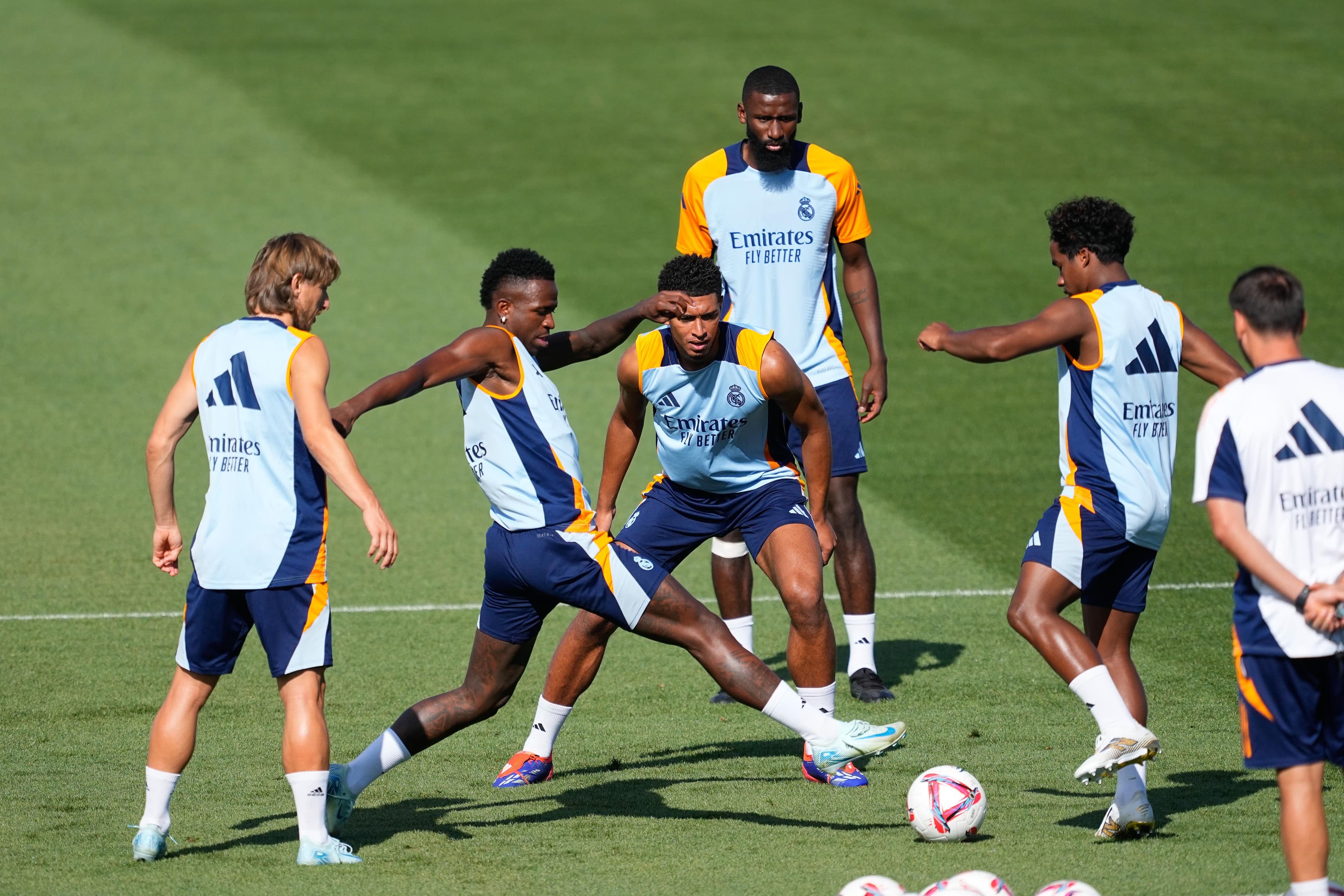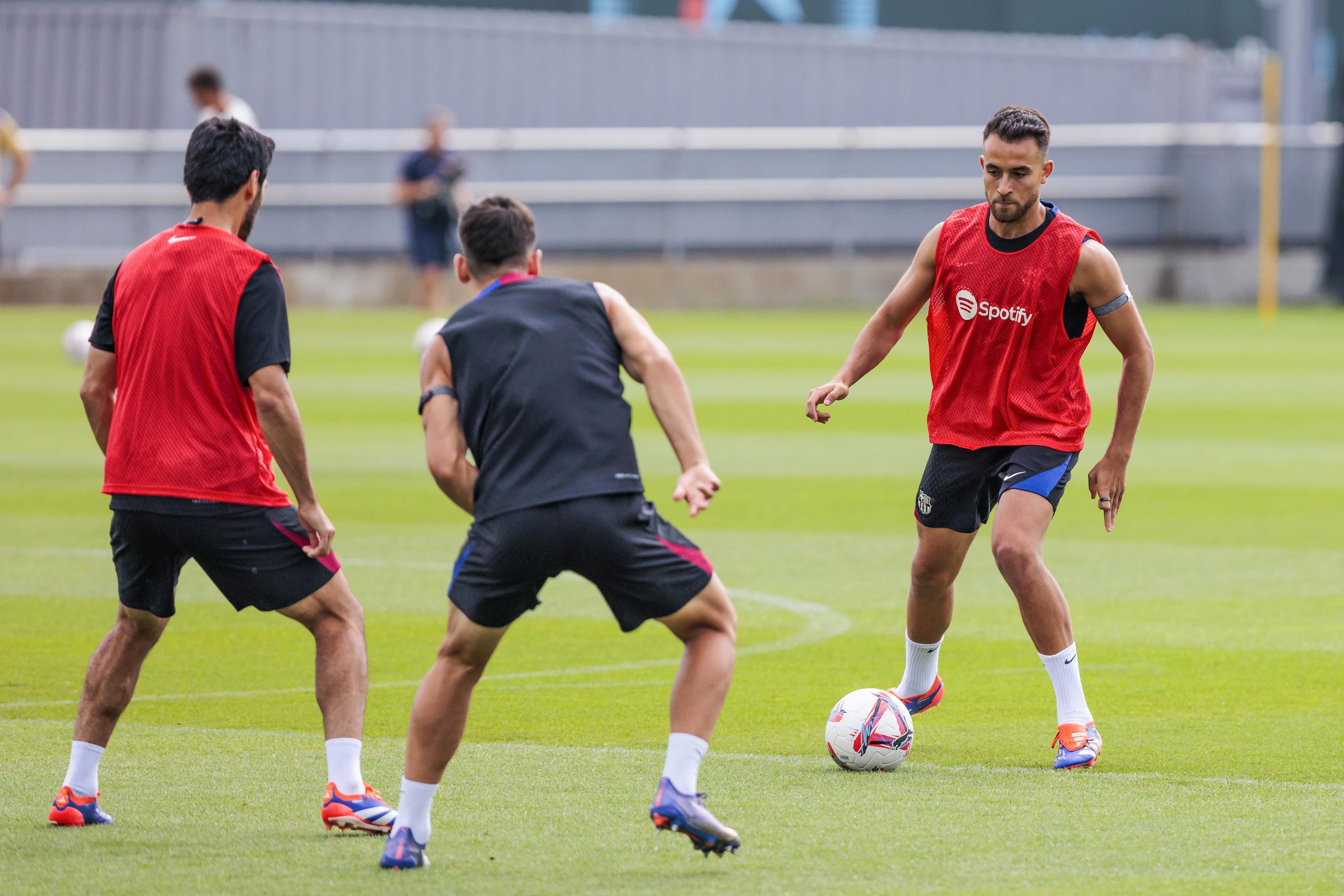Whether you're at a high level or coaching amateurs, the coach must ensure that the content of the practice session the day before a game doesn't deplete the players' physical or mental reserves. Here's an explanation.
Scrimmages, shadow training, speed work, shooting, strength training, etc. In many clubs, the athletic component of a pre-game training session can include everything and anything! Yet, this is a critical session. Not because you can drastically improve your players’ abilities 24 hours before a game, but because poorly adapted content can negatively impact your team's physical and mental freshness at kickoff. Therefore, it is essential to distinguish between what works and what doesn’t. For instance, there should be no lactic acid work (maximal repetitions lasting between 7 seconds and 1 minute), as it’s well-known that the body takes a long time to fully recover from this. Similarly, threshold-type aerobic exercises (like running at 75-80% of one's aerobic capacity) are also off-limits, as the player won't fully recover before 24-48 hours have elapsed.
No extended repetitions requiring high energy expenditure
Generally, the practice the day before the game shouldn’t include prolonged efforts that require significant energy expenditure. For example, a 7v7 scrimmage on a large field should be avoided, especially if it’s meant to decide who starts the game. Such scrimmages would create too many nerve impulses. So, what should you do? The focus should be on "speed and quickness." This should be the dominant component of the session. However, after each repetition, ensure that the player has fully recovered to avoid slipping into lactic acid work. Instead of the traditional recovery formula (rest = 10 times the duration of the effort), I recommend no more than 7-second repetition followed by 4 minutes of rest. Ideally, these drills should involve rotations and changes of direction and include acceleration, and deceleration over very short periods. These will target both motor speed and cognitive speed (reaction time and information processing from visual cues).

Favor activities that emphasize cooperation over competition
Traditional straight-line sprints (over 10, 20, or 30 yards) are not as representative of runs executed in the game. When it comes to activities, choose those that emphasize cooperation rather than competition (like a "toro/rondo"). The session should always follow a certain progression, starting with individual efforts (technical drills) for the first 15-20 minutes, then gradually introducing small-sided competitive activities on a smaller pitch (such as 2v1 scenarios). As for set-piece work, this involves short, intense repetitions (corners, free kicks), but recovery time can be shortened since not all players are involved in each set piece (depending on where the ball lands). Finally, on eve of game day, "speed and quickness" can also be developed through coordination drills, if the focus is on movement frequency rather than strength (e.g., jumping over hurdles), which involves plyometric work that is not suitable one day before a game! Similarly, extended shooting drills are not recommended, because of the muscular fatigue that it will cause. Last piece of advice: shortening the session by 20 minutes will ensure better recovery and help players reach an optimal state of alertness.
10 key points to remember
- A poorly designed session on the day before the game can negatively affect the team’s physical and mental freshness for the game.
- Avoid lactic acid work (maximal repetitions between 7 seconds and 1 minute), as complete recovery will take a long time.
- Avoid threshold-type aerobic exercises (e.g., running at 75-80% of the aerobic capacity), as a complete recovery won't happen within 24-48 hours.
- Scrimmages aimed at deciding starting spots will create too many nerve impulses.
- The focus of the session should be speed and quickness, ensuring players fully recover between repetitions.
- Short repetitions, with rotations, changes in direction, acceleration, and deceleration, which engage both motor and cognitive speed.
- Favor activities that emphasize cooperation over competition.
- Ensure a progressive approach during the session, culminating in small-sided competitive activities on a reduced pitch.
- For speed and sharpness, coordination drills can be used, if the emphasis is on movement frequency, not force (no plyometrics or shooting drills).
- Cutting the session 20 minutes short ensures better recovery and helps players achieve an optimal state of alertness.


